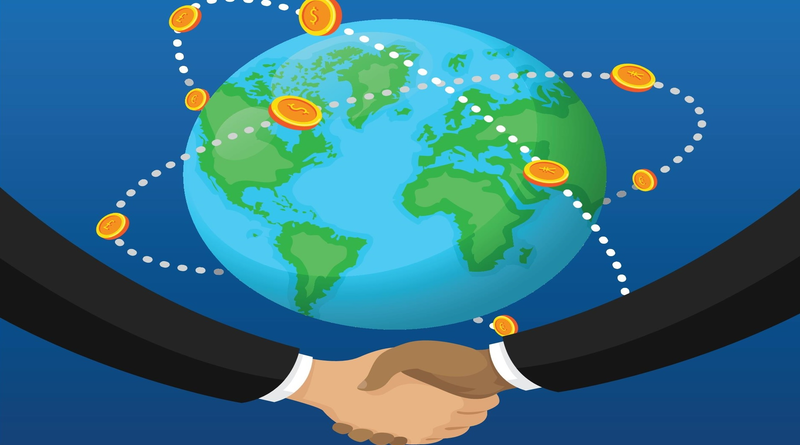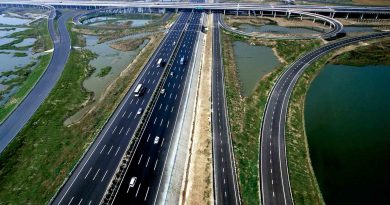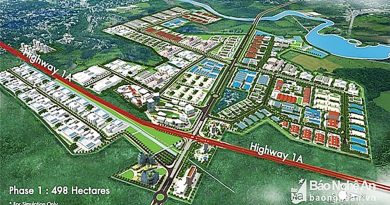Harnessing further FDI to Vietnam
Since national reunification in 1975, Vietnam’s economy has grown from strength to strength. Senior economist Nguyen Mai writes about how the economy has developed in that time, with foreign direct investment serving as one of the key driving forces.

Vietnam achieved its national reunification on April 30, 1975, fulfilling its strong aspirations, with the sacrifice of many generations of Vietnamese people.
Currently, the country is fighting another enemy – the global coronavirus pandemic, demonstrating its people’s brainpower, creativity, and discipline. This has become a role model for many nations to apply.
During its national construction and development, attraction of foreign direct investment (FDI) has become a bright colour in the Vietnamese economic picture as it has been an important and stable impetus for the economy over the past three decades and more.
As of March 20, Vietnam had nearly 31,670 valid foreign-invested projects registered at $370.1 billion, of which 58.3 per cent, or $215.6 billion, has been disbursed. Some 19 out of 21 economic sectors have been home to FDI, with processing and manufacturing achieving $216.7 billion registered FDI (58.6 per cent of the economy’s total), property business $58.6 billion (15.8 per cent), and electricity production and distribution $27.7 billion (7.5 per cent).
As many as 136 nations and territories have been investing in Vietnam, including South Korea with $68.6 billion in registered capital (18.5 per cent), Japan $59.7 billion (16.1 per cent), followed by Singapore, Taiwan, and Hong Kong. In 2018 and 2019, Vietnam was among the world’s list of top 20 largest FDI attractors.
All 63 cities and provinces have also attracted FDI, including Ho Chi Minh City with registered $47.5 billion (12.8 per cent), Hanoi $34.64 billion (9.4 per cent), and the southern province of Binh Duong $34.61 billion (9.3 per cent).
Foreign-invested enterprises (FIEs) have been providing jobs for 4.5 million direct local labourers and millions of indirect labourers. They hold 23-25 per cent of total national development investment capital, and create over 50 per cent of industrial production value, while helping the country develop a modern financial and banking system. They also hold 70 per cent of the nation’s total export turnover, and are responsible for 20 per cent of state budget and 20 per cent of GDP.
FIEs have helped Vietnam engage further in international integration since doi moi and the opening door policy were launched, contributing to supporting Vietnam to get out of international embargo, and recover its relations with many nations and international organisations. Moreover, FIEs have also helped Vietnam enhance its status and prestige in the region and the wider world.
However, FDI has also created burning issues about environmental protection, transfer pricing, tax evasion, low technology, labour dispute, goods origin, and even national security and defence. This would need improvements in state management capacity and sound policies to ensure the benefits of both Vietnam and investors.
Recent performance
Over the past three months, coronavirus has had negative impacts on the Vietnamese economy, with first-quarter GDP growing only 3.82 per cent on-year, and attracted FDI reduced on-year.
From January to March 20, disbursed FDI hit $3.85 billion, equal to 93.4 of that in the same period last year. Newly-added and stake acquisition-based FDI touched $8.55 billion, tantamount to 79.1 per cent of that in the corresponding period last year.
However, thanks to the Bac Lieu liquefied natural gas plant registered at $4 billion, the total registered FDI in the period reached $5.5 billion for 758 new projects. Thus the remaining 757 projects were registered with $1.5 billion, meaning about $2 million for each project – equivalent to 50 per cent of the same period last year.
In the first quarter of this year, FIEs’ production and business suffered from different impacts as they are in different sectors. The sectors of garments and textiles, beer, fisheries, hotels, and leased offices have been hit harder than the sectors of electronics and computers, for example.
Production developments in January and February differed from those in March. Many enterprises faced difficulties in importing materials in the first two months due to the outbreak in China, which is Vietnam’s key supplier of materials of garments and textiles, footwear, and electronic components. Many enterprises stopped operation in mid-March.
However, since early March when Vietnam and China resumed their trade activities, the pandemic has attacked Europe and the US which are also major partners of Vietnam. This has forced many partners in these markets to reduce or cut orders from Vietnamese firms, making it hard for Vietnam to produce and export goods to Europe and the US.
For example, Tan Thuan Export Processing Zone in Ho Chi Minh City has 168 operational enterprises with 56,000 Vietnamese employees and 585 foreign employees. So far, 33 enterprises are hit by COVID-19, leaving almost 6,000 workers in temporary unemployment and 1,000 in permanent unemployment.
In the first quarter of this year, FIEs’ total export turnover, including crude oil exports, hit $40.4 billion, equal to 97.1 per cent of that in the same period last year, and occupying 70.8 per cent of the economy’s total export turnover.
FIEs’ total import turnover sat at $33.18 billion, down 0.8 per cent on-year, and accounting for 59 per cent of the country’s total import turnover.
It has been for the first time that FIEs’ export-import turnover has seen a drop after many years of consecutive increases. However, the economy still witnessed a trade surplus of $7.2 billion, though locally-invested enterprises saw a trade deficit of $4.4 billion.
A brighter future
It is now difficult to forecast the sabotage level of the pandemic on the global economy, including the Vietnamese economy.
The International Monetary Fund and the World Bank have recently forecast that the global economic growth this year may be below zero, while Vietnam is expected to grow below 5 per cent.
However, some optimistic signals have been seen as China has begun to recover its economy, with many enterprises bouncing back. South Korea has also seen a reduction in new positive cases. This is contributing to a bright outlook for the sectors of aviation, tourism, and trade and investment between Vietnam and these nations.
Meanwhile, Vietnam’s fight against the pandemic is also witnessing positive development. The government and the State Bank of Vietnam have asked commercial banks and localities to deploy financial and fiscal packages to support enterprises and people. The packages are worth many billions of US dollars via direct loans and reductions and exemption of assorted taxes and fees, as well as simplified administrative procedures.
In addition, the business community has also been implementing activities for mutual support, with business associations instructing their member enterprises to conduct new production and business plans and strategies, in line with the government’s post-pandemic plans, in which there will need a boost in innovation, renewal of growth model, with a stress laid on improving the quality and effectiveness of socio-economic development. This is aimed to translate the nation’s aspiration for prosperity into a reality.
In 2020, despite massive difficulties facing enterprises, IT and digital technology are strongly developing, with 5G to be deployed nationwide. Meanwhile, many enterprises are greatly interested in applying solutions related to the circular economy, and localities are reaping achievements in their shift to a digital economy, with many successful models about organic agricultural production.
This year is also the second one for the implementation of the Comprehensive and Progressive Agreement for Trans-Pacific Partnership, while it is expected that the EU-Vietnam Free Trade Agreement will take effect in July. These will create new opportunities for Vietnam to expand trade and investment ties with the wider world.
Regarding economic growth, the Ministry of Planning and Investment forecast that the economy may grow 5.32 per cent this year if the pandemic ends in the second quarter of the year.
However, some economic experts hold that if the government’s policies are well implemented, and enterprises have good conditions to recover their performance, it is likely that the economy can grow 6.8-7 per cent this year.
Foreign investors are showing their big confidence in the Vietnamese economic outlook thanks to the country’s sturdy actions to help them out of difficulties and cope with the pandemic.
According to the Politburo’s resolution on attracting foreign investment, prioritising high-tech and clean sectors, it targets FDI of $30-40 billion a year in 2021-2025 and $40-50 billion a year in the 2026-2030 period, and disbursement rates of at least 66 and 75 per cent respectively.
Now is the time for the nation to boost its institution and simplify its administrative apparatus, and rev up innovation. This will determine the speed of economic recovery after the pandemic, and implement the target of attracting more high-quality FDI inflows.
Source: VIR









